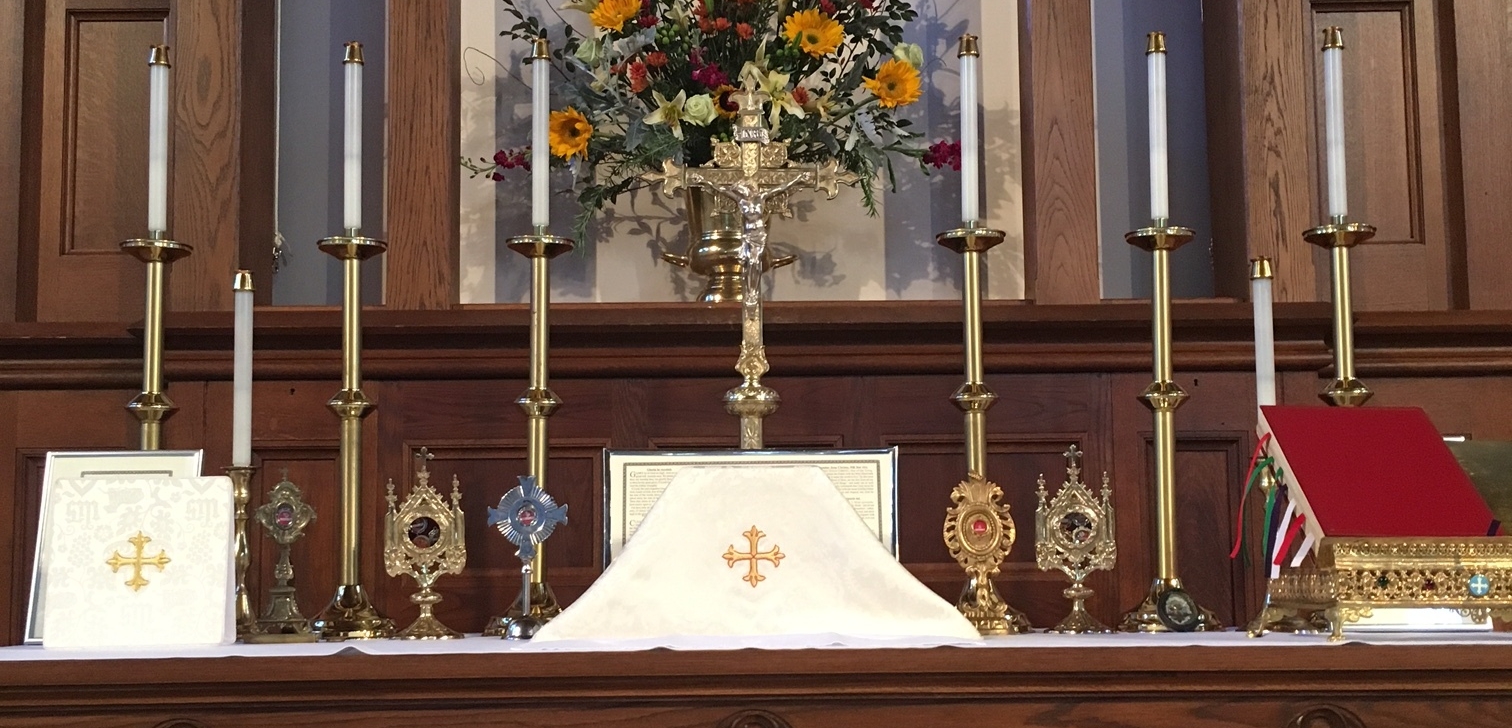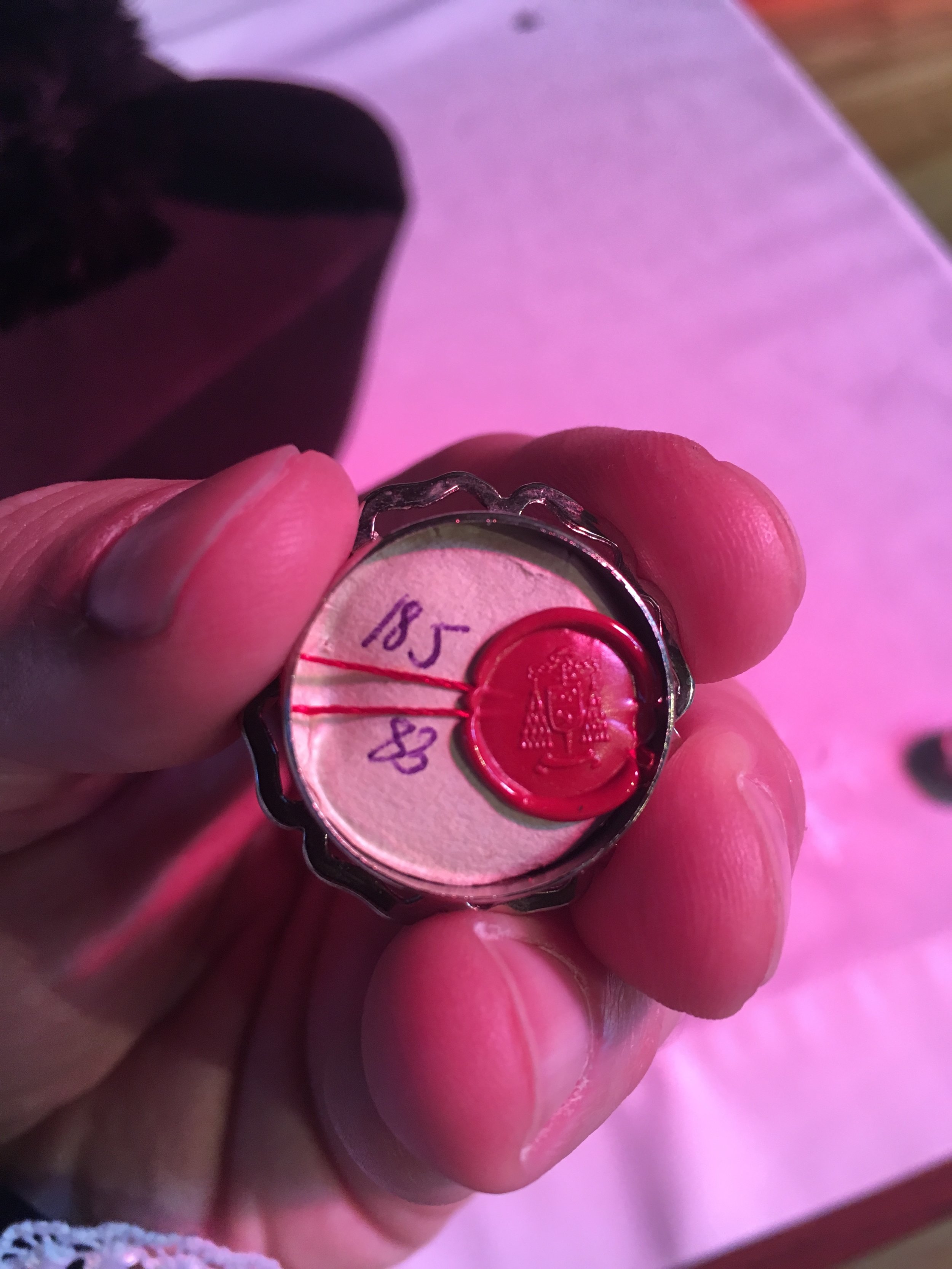Relics in the Parish
Ranking very high among the most humbling moments of my life is when I became the custodian of twelve first class relics. Given to my care by my mentor and dear friend, they are holy and quite tangible signs of incarnational faith.
Rather than a morbid collection or ingredients to be thrown into a potion of superstition, relics point to Our Lord by connecting us with the mortal remains of those who lived, and sometimes died, for him. Relics are reasonable in that so many who would never dare to honor sacred relics in a church think nothing of honoring the cremains of a parent on the mantle, or remnants of the deceased wardrobe in the closet, or some innocuous object that is more precious than gold purely because it was once used and loved by someone we love who has died. It is natural to keep with reverence tokens of the deceased. I personally have retrieved a locket of hair for two parents who tragically lost a child. No one would bat an eye at such a reminder. The saints are as close to us as our own blood, because we are joined in the Blood of Christ.
Roman Catholic canon law and the tradition of the Western Church is to have relics embedded in every altar. Portable altar stones with relics attached to the underside are also used. The relics are referenced in the traditional mass just before the introit as the priest, for the first time, reverences the altar with a kiss and says
Oramus te. Domine, per merita Sanctorum tuorum, quorum reliquiae hic sunt, et omnium Sanctorum: ut indulgere digneris omnia peccata mea. Amen.
We beseech You, O Lord, by the merits of Your Saints whose relics lie here, and of all the Saints, deign in your mercy to pardon me all my sins. Amen.
In censing the altar, the relics are censed after the crucifix and before the back of the altar (swings 4-7 below).
The twelve relics in my care are of St Augustine of Hippo, St Stephen the Protomartyr, St Antony of Egypt, St Francis de Sales, St Blaise, St Philip Neri, St Aloysius Gonzaga, St John Vianney, St Pius X, St Theresa of Lisieux, St Paul of the Cross, and St Charles Borromeo.
The relics, presumably very small pieces of bone, are carefully encased in a small container with glass on one side and a removable metal back. Removing the back case reveals a very small wax seal from the ecclesiastical authority. Each of the relics comes from a certificate from various authenticating bodies: Postulator Generalis from the Congregation for the Causes of the Saints, the Vicar General or Rome, or the Provincial Master of a religious order.
Since these relics are not embedded in the altar, they are displayed in simple reliquaries. Two of my reliquaries conveniently hold a single relic, while others require more ingenuity. For lack of a better method, I used putty to secure some of the relics to the felt backing of the reliquary. In other case, I was able to use a straight pin to secure the relic in place.
On the External Solemnity of All Saints, all twelve relics were placed on the altar, truly providing a great cloud of witnesses for the Sacrifice of the Mass. At the conclusion of the mass, I issued an invitation for closer inspection of these holy treasures. I was delighted in the reverent interest and the awe that come from realizing that Sts Augustine, Stephen, Antony, Teresa, etc., aren't just stories made up about holy people - they actually lived and they lived with heroic faith and virtue.






